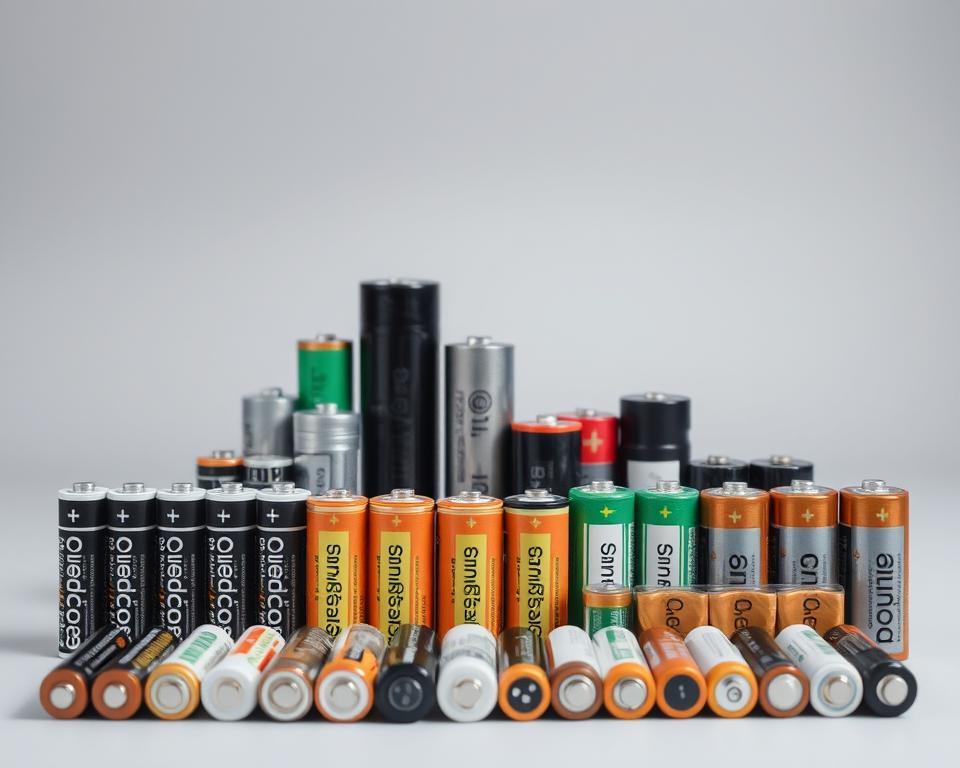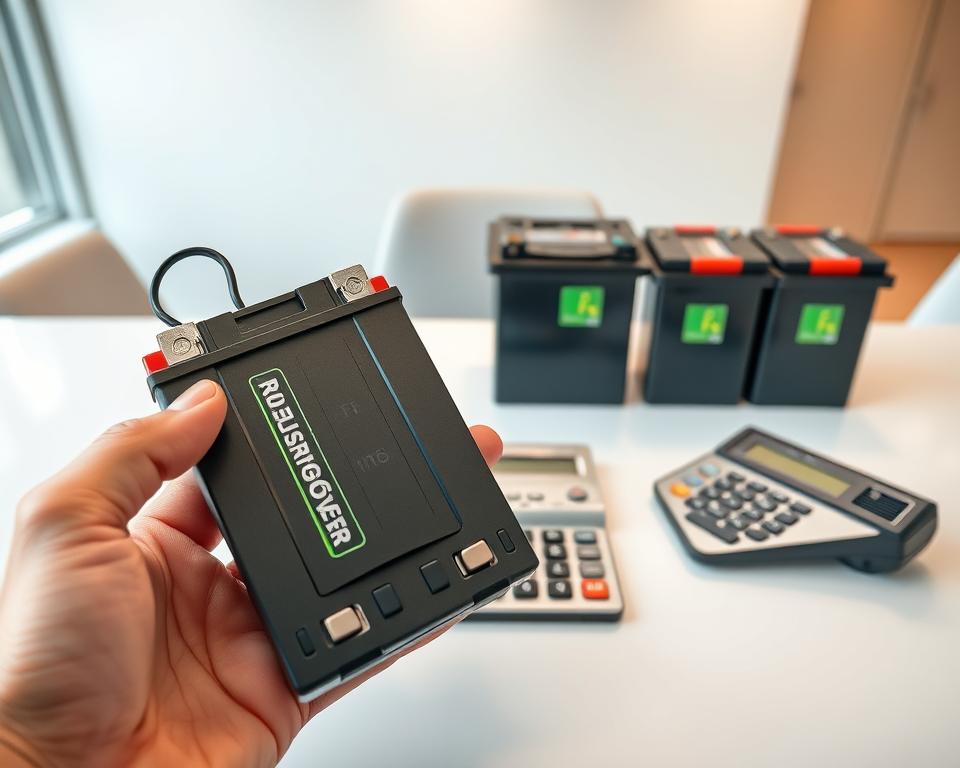Welcome to your essential guide for making savvy power choices. Today’s market offers countless options for keeping your gadgets running. But knowing what truly matters can save you both money and hassle in the long run.
More UK shoppers are choosing reusable power sources for their cost-efficiency and eco benefits. These units can be reused hundreds of times, cutting down on waste dramatically compared to single-use alternatives.
From digital cameras to everyday remotes, many devices perform better with reliable energy cells. Understanding capacity—measured in mAh—is key. Higher numbers like 2100mAh for AA or 800mAh for AAA mean longer life between charges.
Trusted retailers stock quality brands. As you know, pairing your purchase with a compatible charger ensures optimal performance and extends your investment’s lifespan.
Key Takeaways
- Reusable power cells offer significant long-term savings and environmental advantages.
- Capacity (mAh) directly influences how long your devices stay powered.
- Compatible chargers are essential for maintaining battery health and efficiency.
- Trusted UK retailers provide reliable options from leading brands.
- These energy units suit both high-drain and everyday electronic devices.
- Initial investment is higher, but overall cost reduces with repeated use.
- Proper selection ensures better performance across various gadgets.
Key Considerations When Choosing Rechargeable Batteries
Making an informed choice about rechargeable batteries involves more than just picking the first option you see. Several factors determine whether your devices receive optimal power and value.
Brand reputation stands as a primary concern. Trusted names consistently deliver reliable performance. These top manufacturers invest heavily in quality control and innovation.
You’ll find these reputable brands at major UK retailers. As you know, their products often receive outstanding user ratings, like Duracell’s AAA cells scoring 4.85/5.
Capacity measurements prove equally important. This specification, shown in mAh (milliampere-hours), indicates how much energy a cell can store. Higher numbers mean longer periods between charges.
Standard AA units typically offer around 2100mAh, while AAA versions provide approximately 800mAh. High-drain devices like digital cameras benefit greatly from these enhanced capacities.
Pack size directly affects your overall value proposition. Multipacks deliver better per-unit savings for households with numerous gadgets and offer excellent value for money.
Always check availability options before purchasing. Some products require home delivery, while others offer convenient in-store collection.
Initial costs might appear higher than disposable alternatives. However, reusable power cells can be recharged hundreds of times, creating significant long-term savings.
Compatible chargers remain essential for maintaining performance. Leading services offer various charging options designed to maximise your investment’s lifespan.
Always consult ratings before purchasing. This feedback highlights consistent performance across different devices.
Specialised applications require particular attention. Power tools or security systems need specific energy units like Yuasa’s 12V 7AH model. Always match specifications to your device’s requirements.
Successful selection involves balancing multiple factors:
- Brand reliability and user ratings
- Capacity requirements for your devices
- Pack size relative to your needs
- Total cost including charging equipment
- Availability through your preferred retailer
This balanced approach ensures you find perfect power solutions for your UK household. The right choice keeps your devices running smoothly while saving money over time.
Types and Sizes of Rechargeable Batteries
Navigating the diverse world of reusable power cells requires understanding their physical forms and applications. Different gadgets demand specific energy sources to function optimally.
AA and AAA units dominate household usage. These common sizes power everything from remote controls to wireless mice. Venom offers excellent AA packs with 2100mAh capacity.
Their smaller AAA counterparts provide around 800mAh. This suits lower-drain devices perfectly. Multipacks deliver fantastic value for frequent users.

Specialised sizes serve particular purposes. D cells like Energizer’s 2500mAh version power larger devices. 9V options work brilliantly in smoke alarms.
Application-specific energy units exist for professional tools. Kärcher’s 18V model supports power washers. Security systems need dedicated units like Yuasa’s 12V 7AH.
Choosing incorrect sizes risks poor performance. Always check your device’s manual first. Matching specifications ensures safety and efficiency.
Capacity variations influence performance significantly. High-drain gadgets benefit from 2100mAh AA cells. Standard 700mAh AAA units suffice for television remotes.
Pack options cater to different needs. B&Q offers everything from 4-packs to bulk options. This flexibility helps manage costs effectively.
Chemical compositions affect performance, too. NiMH suits general household use. LiFePO4 works better for specialised applications.
Using manufacturer-recommended power sources extends device lifespan dramatically.
Investing in proper energy cells enhances gadget longevity. While AA and AAA types cover most needs, specialised applications deserve particular attention.
Understanding this variety helps UK consumers make informed choices. Whether for everyday gadgets or specific tools, selecting the right power source matters immensely.
Maximising Value: Cost Savings and Environmental Benefits
Smart energy choices deliver impressive financial returns while supporting our planet’s health. These sustainable power solutions offer remarkable value through repeated use and reduced waste.
Consider the maths behind reusable energy cells. A quality pack can be recharged hundreds of times before replacement. This dramatically lowers the cost per use compared to disposable alternatives.
Venom’s 16-pack of AA units costs just £20.39 at leading retailers. This single investment replaces numerous disposable packs over time. The savings accumulate significantly with regular usage.

High-drain gadgets like digital cameras benefit most from this approach. Frequent users see quicker returns on their initial investment. Lower-drain devices offer more gradual but still valuable savings.
Environmental advantages complement these financial benefits. Reduced waste means fewer units in landfills each year. This aligns perfectly with UK sustainability targets and consumer preferences.
Proper recycling and disposal maximise the environmental benefits of these energy solutions.
Quality maintenance extends your investment’s lifespan further. Compatible chargers from Argos and B&Q ensure optimal performance. This enhances both savings and environmental benefits over time.
Retailer promotions occasionally boost these advantages further. B&Q’s Black Friday events sometimes feature discounted lithium options. These limited-time offers increase cost-effectiveness dramatically.
While initial costs appear higher, long-term perspectives reveal true value. Families with multiple gadgets benefit particularly well. Businesses also find substantial savings across their operations.
Environmental conservation extends beyond simple waste reduction. Fewer raw materials are needed for production over time. This contributes to a smaller overall carbon footprint.
According to analysis from environmental experts, reusable power cells can be recharged hundreds of times before replacement. Their extended lifespan means fewer batteries end up in landfills, reducing waste and the need for new raw materials.
Successful value maximisation involves both smart selection and proper care. Trusted UK retailers support this approach with quality products. The result balances economic savings with ecological responsibility.
View these energy solutions as long-term investments rather than quick purchases. The right choices today yield benefits for years to come. Both your wallet and the environment will thank you.
The Future of Rechargeable Battery Technology
Tomorrow’s power solutions look incredibly promising. Emerging innovations like lithium iron phosphate cells offer higher capacity and improved safety. These advancements mean longer device runtimes and better reliability.
Smart features are becoming standard, too. Some units now include Bluetooth connectivity for performance monitoring. This lets users track energy levels via smartphone apps.
Integration with renewable energy systems is growing. These power sources support sustainable living across the UK. They help store solar energy for home use.
Future developments focus on faster charging and eco-friendly materials. Solid-state technology promises even greater advances. Specialised packs will suit smart homes and medical equipment.
Staying informed ensures you benefit from these improvements. The future brings smarter, greener power for all your gadgets.

